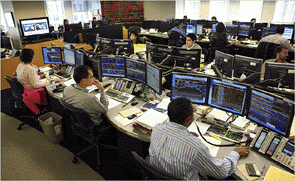
by Mike Jones
NZD
It’s been a real rollercoaster ride in the NZD over the past 24 hours. The net result is the NZD/USD currently trades at familiar levels around 0.7980.
Yesterday’s NZ CPI figures were a shade softer than we expected. In fact, inflation hit the lowest level since 1999 (1.0%y/y vs. 1.2% expected). The news briefly put the NZD on the back foot, but it wasn’t long before the currency was marching higher again.
The RBA minutes released later in the afternoon suggested the RBA is in no rush to cut rates again. Indeed, we suspect Australian activity indicators will have to deteriorate sharply for the RBA to ease again in August.
Of course, for a market pricing 100bps worth of additional RBA easing, the minutes were a little hard to swallow. As some of this easing was priced out, the AUD/USD was launched ½ cent higher to 1.0300 yesterday. The NZD/USD was dragged up to 0.8000 in sympathy.
Overnight, all eyes were on Fed chairman Bernanke’s testimony before the senate. Currencies flew around all over the place as investors scoured the details for clues on future Fed action (see Majors). In the end, Bernanke offered nothing particularly new.
Last night’s dairy auction revealed a 0.9% dip in prices, following on from the 5.9% fall a fortnight ago. The result was certainly consistent with the recent firming in the USD, but is a little disappointing in the context of rising prices for other ‘soft’ commodities.
Perhaps global growth concerns are outweighing the possible boost from tighter US diary supplies. In any event, there was little reaction from the NZD and we suspect the risks are for higher prices in the next few auctions reflecting worsening US drought conditions and soaring global grains prices. Higher dairy prices in coming months would shore up fundamental support for the NZD.
For today, the local data calendar is empty. Across the Tasman, a monthly update of the Westpac Leading Index is likely to be ignored. We’d expect the NZD/USD to encounter a few headwinds on bounces to 0.8000, with stiffer resistance sighted at 0.8080. Near-term support is eyed at 0.7930.
------------------------------------------------------------------------------------------------------------------------------------------
To subscribe to our free daily Currency Rate Sheet and News email, enter your email address here.
------------------------------------------------------------------------------------------------------------------------------------------
Majors
After a night of vicious volatility, most of the major currencies have finished the session pretty close to where they began.
The knee-jerk response to last night’s testimony from Fed chairman Bernanke’s was to buy the USD. Bernanke provided no hints the Fed was on the cusp of an imminent easing and struck a fairly downbeat tone on the US economy.
The broad USD strengthening in the wake of the comments took a gouge out of most of the majors, with a coincident plunge in US stocks adding to the weight on risk-sensitive currencies like the AUD/USD.
However, it wasn’t long before these moves were reversed. During Bernanke’s Q&A session, markets seemed to find the QE hints they were after.
Perhaps it was Bernanke’s discussion on the easing tools at the Fed’s disposal (asset purchases, lowering the interest rate on reserves, extending guidance on rate hikes). US stocks recovered their earlier losses (the S&P500 is currently up 0.7%) and the EUR, AUD, and GBP all bounced back to pre-Bernanke levels.
Reading between the lines, it appears Bernanke is leaving the door open to additional easing, should US economic momentum continue to stutter. Additional QE could be announced at the August or September meeting if the data between now and then remains lacklustre. The US CPI figures released overnight (0%m/m, 2.2%y/y) show that inflation is certainly no block to further easing.
The next key event to watch is the 27th July preliminary Q2 US GDP figures. If these come in soft (say 1% around annualised), markets will move to price QE3 and the USD will suffer.
However, for now, we suspect the major currencies will settle back into familiar ranges. Near-term, the 1.2160-1.2400 range should contain the EUR/USD.
Other news: German ZEW survey shows German economy stumbling in the 3rd quarter (-19.6 vs. -20.0 expected). UK inflation tumbles to 2.4%y/y in June (2.8% expected), the lowest since November 2009, and possibly paving the way for the MPC to extend QE in November. Bank of Canada holds rates at 1% as expected. US industrial production 0.4%m/m vs. 0.3% expected.
Event Calendar:
18 July; NZ dairy auction; CH property prices; UK BoE minutes; UK ILO unemployment; Bank of Canada decision; US CPI; US Bernanke delivers semi-annual testimony; US industrial production; 19 July: AU NAB business confidence; UK retail sales; US housing starts; US building permits, US Fed’s Beige Book; US Bernanke speaks again; 20 July: NZ migration; NZ credit card spending; AU terms of trade; UK public finances; EU German PPIs; US jobless claims; US Phillie Fed; US home sales.
No chart with that title exists.
We welcome your comments below. If you are not already registered, please register to comment.
Remember we welcome robust, respectful and insightful debate. We don't welcome abusive or defamatory comments and will de-register those repeatedly making such comments. Our current comment policy is here.